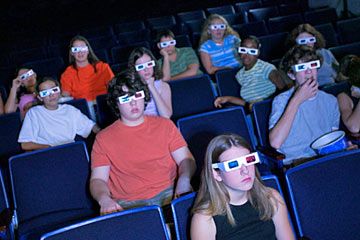TV ads are built on one simple idea: If you buy X, you'll get Y. But Y is rarely the product itself. Rather, it's a positive emotion, a perfect relationship, higher social status or an amazing experience. For example, if you buy Big Red gum, you'll get to "kiss a little longer." Or if you go to Toys "R" Us, you'll reconnect with your youthful self, allowing you to have even more fun with your kids: After all, you don't wanna grow up, 'cause maybe if you did, you couldn't be a Toys "R" Us kid! Leaving the jingles aside, if you had a Verizon phone, you'd be able to stay close with your family. Or if you owned a Kia car, you would immediately transform into an ultracool rodent. (Well, maybe that one's a little far-fetched!)
Maybe more importantly, in terms of TV ads' impact on culture, buying Calvin Klein jeans will make you sexy like Kate Moss, or buying Nike sports apparel will make you ready to "Just Do It," like a professional beach volleyball player.
Advertisement
Of course, this isn't breaking news. What's cool, though, is how exactly it works -- more specifically, how TV ads both reflect culture and drive it forward, pulling us unsuspecting viewers along with it.
In the early 1900s, clever industrialists faced competition from other clever industrialists. They quickly realized that instead of simply selling a better cooking stove, for example, they could sell the idea that their cooking stove above any other on the market was the key to a "modern" household. And what did society want? It wanted to be modern. And how did society achieve this? By buying brand X's stove, because it appeared to be the obvious choice. And thus the idea of buying your way to an idealized life was born.
Next up, we'll look a little more at how today's ads affect TV viewers.
Advertisement



